GPU Showdown: Comparing Same-Tier Graphics Cards
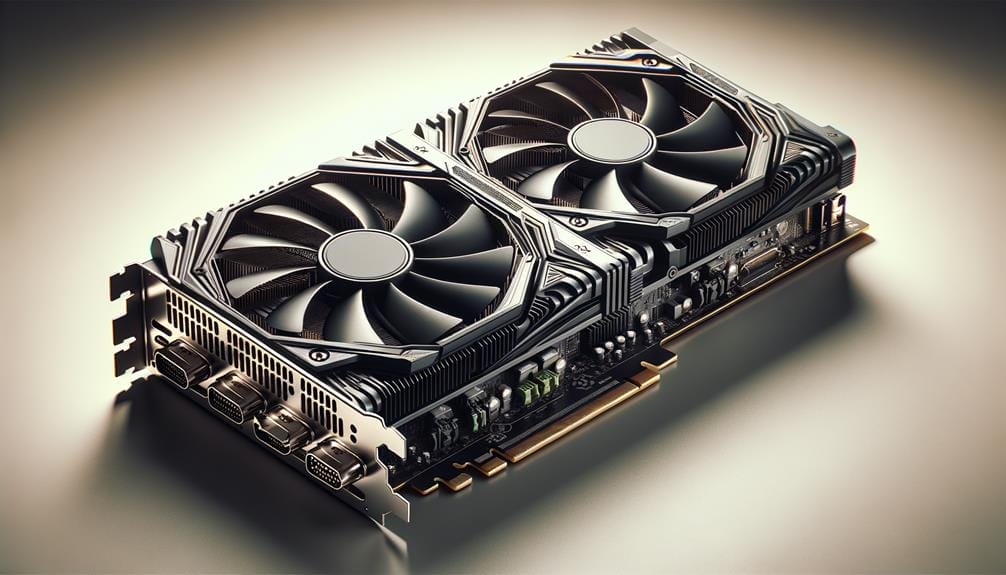
As the demand for advanced graphics processing units (GPUs) rises, finding the ideal one from a wide array of similar choices becomes progressively more difficult.
With a multitude of factors influencing the performance disparities between GPUs, it is crucial to gain a comprehensive understanding of these intricacies.
From form factor and cooling capabilities to the advantages of Add-In Board (AIB) variants, the nuances of GPU comparisons are multifaceted.
This exploration will demystify the critical facets that set one graphics card apart from another, providing valuable insights for enthusiasts and professionals navigating the ever-evolving GPU landscape.
Key Takeaways
- Most people prefer buying Add-In Board (AIB) designs from partners like MSI or Gigabyte rather than the finalized graphics card from GPU manufacturers.
- AIB GPUs can have different traits compared to reference designs, such as larger or smaller cooler designs, factory overclocks, additional onboard lighting, and unique form factors.
- AIB GPUs are available in higher numbers due to multiple manufacturers selling them, making them more accessible.
- When comparing GPUs of the same tier, it is important to assess the size and form factor, cooling performance, overclocking headroom, RMA and return policies, and look for benchmarks to compare performance.
GPU Manufacturing and AIB Partners
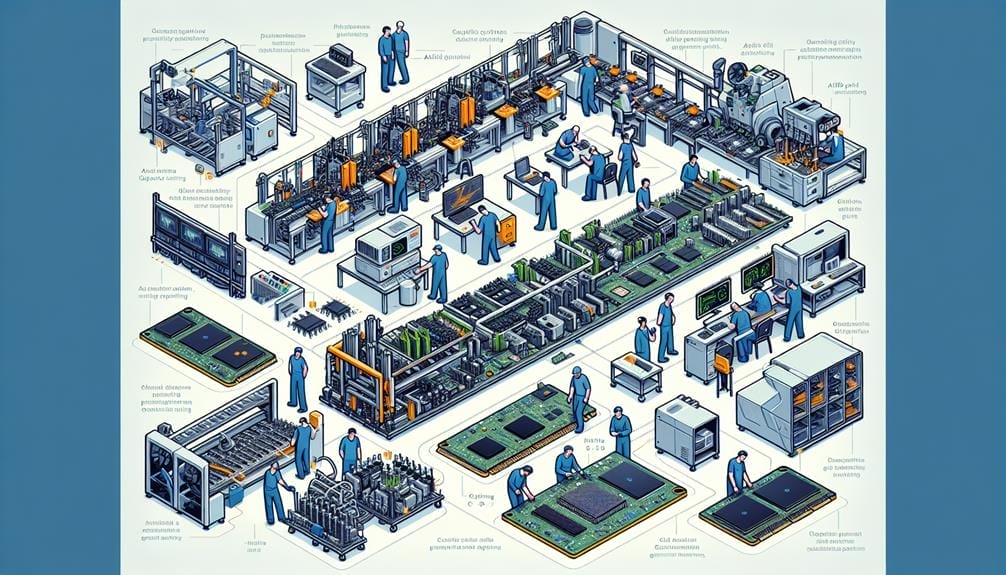
When considering modern GPUs, the primary sources are AMD, Nvidia, and Intel, with the finalized graphics cards typically being acquired through Add-In Board (AIB) partners rather than directly from the GPU manufacturers.
AIB GPUs are more favored than reference design GPUs due to their availability in higher numbers and potential for unique traits. A crucial factor in GPU performance is the cooling system. AIB GPUs may feature larger or smaller cooler designs, impacting their thermal performance. High-end GPUs often require larger coolers for efficient heat dissipation, whereas mid-range GPUs can suffice with smaller designs.
Cooling performance is not solely determined by cooler size and fan count, necessitating benchmarks for accurate comparison. Therefore, when comparing GPUs, the importance of cooling in GPU performance cannot be overlooked, as it directly impacts the card's overall capabilities.
Factors Affecting GPU Performance Differences
Factors affecting GPU performance differences encompass various technical and design attributes that directly impact the overall capabilities and efficiency of the graphics processing unit. One crucial aspect is GPU cooling performance, which significantly influences the card's ability to maintain optimal operating temperatures, ultimately affecting its performance. Additionally, the importance of benchmarks cannot be overstated, as they provide a standardized method to compare the actual performance of different GPUs under various workloads. Below is a table illustrating key factors affecting GPU performance differences:
| Factors | Description |
|---|---|
| GPU Cooling Performance | Influences the ability to maintain optimal operating temperatures. |
| Importance of Benchmarks | Provides a standardized method to compare actual performance. |
How to Compare GPUs of the Same Tier
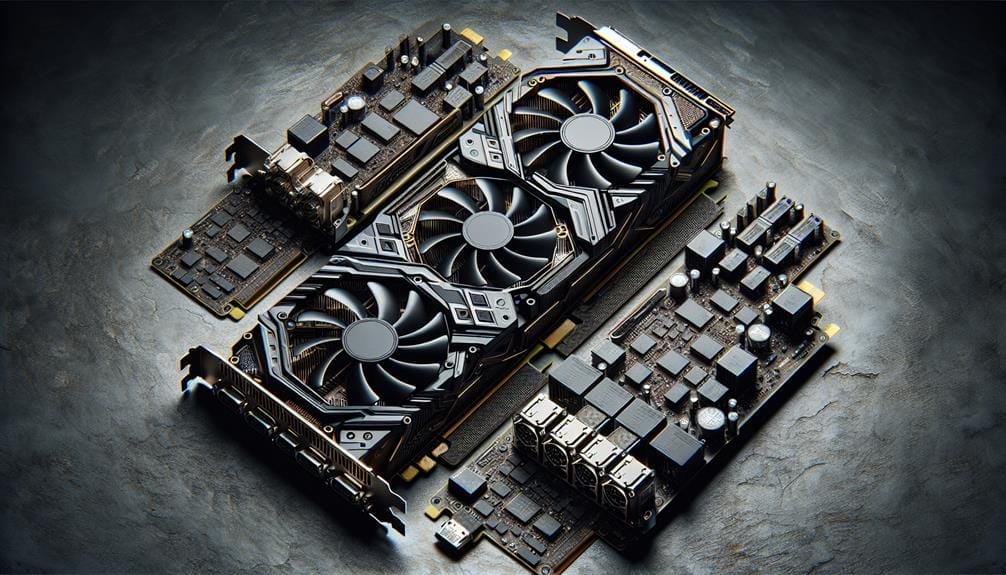
The technical evaluation of GPUs within the same tier encompasses a comprehensive analysis of their size, form factor, cooling performance, and other key attributes, building upon the critical factors influencing GPU performance differences previously outlined.
When comparing GPUs of the same tier, it is essential to assess their overclocking potential, as this can significantly impact performance.
Furthermore, verifying the RMA (Return Merchandise Authorization) policies of the GPUs is crucial to ensure proper support in case of hardware issues.
In addition, considering the cooling performance and form factor is vital, as it directly influences the thermal management and overall efficiency of the GPUs.
Assessing Size, Form Factor, and Cooling Performance
Assessing the size, form factor, and cooling performance of graphics processing units (GPUs) is imperative for making well-informed decisions when choosing the most suitable option for specific computing needs.
Size and Form Factor: Comparing full size and form factor of GPUs is crucial for compatibility and performance.
Cooling Performance: Evaluating the cooling solutions, including the size of the cooler and the number of fans, is essential to ensure optimal GPU performance.
AIB GPU Form Factors: Understanding the different form factors offered by AIB partners can indicate potential performance differences.
Benchmarks: Utilizing benchmarks to accurately compare cooling performance is necessary to make informed decisions.
Understanding GPU form factors and assessing the cooling performance of AIB GPUs are critical factors in selecting the most suitable GPU for your computing requirements.
Additional Support and Resources
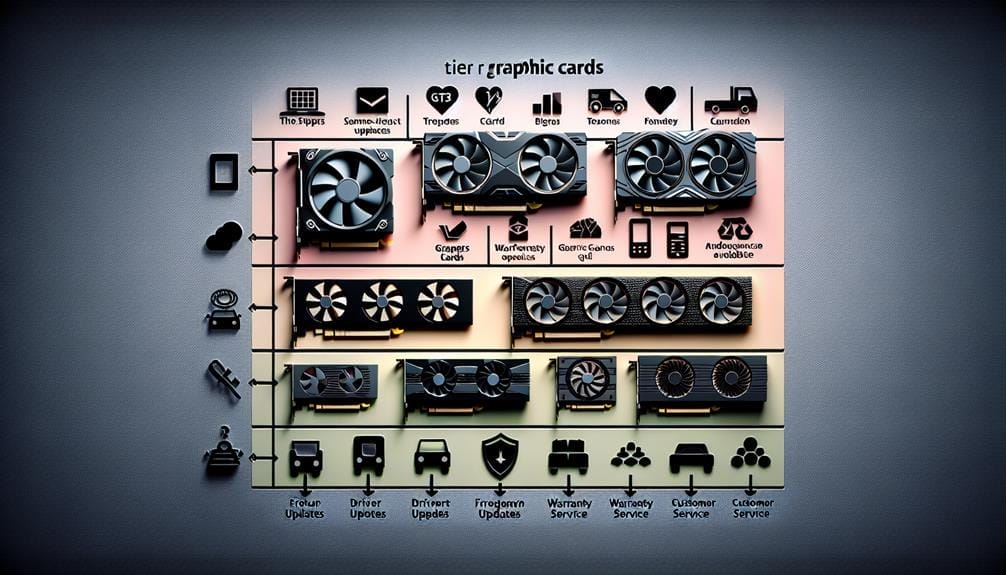
Understanding the nuances of GPU form factors and evaluating the cooling performance of AIB GPUs is pivotal for informed decision-making. Seeking additional support and resources from expert communities can further enhance the decision-making process.
Engaging with the CGDirector team for expert advice can provide valuable insights into the selection of same-tier graphics cards. Utilizing the comments section for additional support allows individuals to tap into a community of users and experts who can offer diverse perspectives and experiences.
This approach can help in gaining a comprehensive understanding of various graphics cards, their performance, and their suitability for specific use cases. Leveraging these additional support channels can empower consumers to make well-informed decisions when comparing same-tier graphics cards.
Key Considerations for GPU Comparison
Key factors influencing the performance disparities among graphics processing units (GPUs) of the same tier can be elucidated through a comprehensive analysis of their design, cooling capabilities, and aftermarket support.
- GPU Price: Comparison of the price points of GPUs within the same tier is crucial for cost-effective choices.
- Power Consumption: Understanding the power requirements of GPUs aids in assessing their efficiency and long-term operational costs.
- Performance Metrics: Evaluating benchmark results and real-world performance data is essential for an accurate comparison.
- Future Upgradability: Considering the potential for future upgrades and compatibility with other hardware components ensures long-term usability.
Analyzing these key considerations allows consumers to make informed decisions when comparing GPUs of the same tier, ensuring they align with specific budget, performance, and power consumption requirements.
Understanding AIB GPUs and Their Advantages
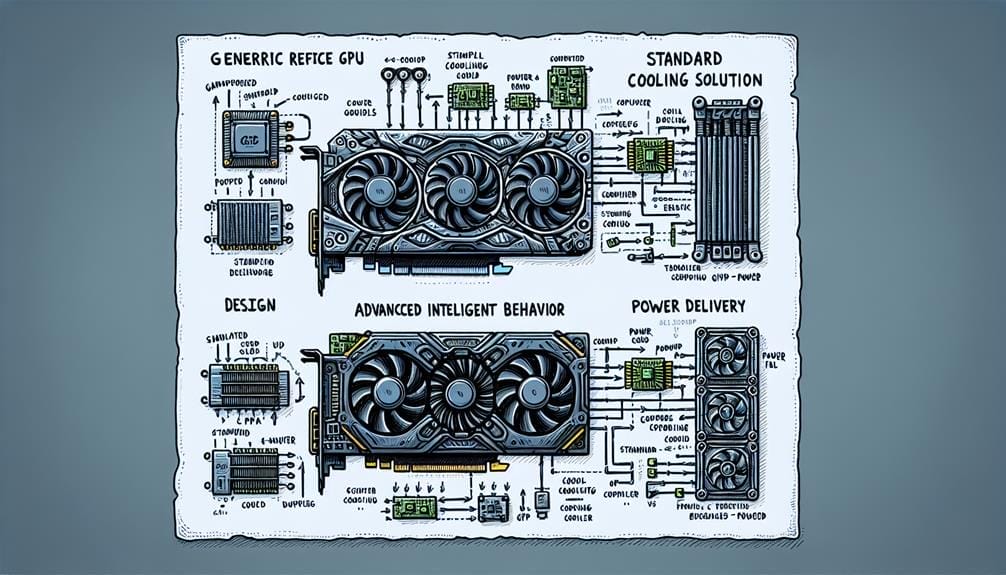
Modern GPUs are primarily sourced from prominent manufacturers such as AMD, Nvidia, and Intel, with Add-In Board (AIB) designs from partners like MSI and Gigabyte being the preferred choice for most consumers.
AIB GPUs have gained popularity due to their numerous advantages. They offer diverse traits compared to reference designs, including larger or smaller cooler designs, factory overclocks, additional onboard lighting, and unique form factors. AIB GPUs also boast brand-specific software and tools, enhancing their appeal to consumers.
Furthermore, the availability of AIB GPUs in higher numbers, owing to multiple manufacturers selling them, ensures a wider range of choices for consumers. This popularity underscores the advantages AIB GPUs offer in terms of customization, performance enhancements, and variety, making them the go-to option for many discerning users.
Making Informed Decisions When Choosing Same-Tier GPUs
When selecting GPUs of the same tier, it is essential to meticulously compare and evaluate various factors to make well-informed decisions. Key considerations include:
- Assessing the size and form factor of the GPUs being compared
- Considering the cooling and cooling performance of the GPUs
- Evaluating the overclocking headroom of the GPUs
- Verifying the RMA and return policies of the GPUs.
Understanding these advantages is crucial in making a decision that aligns with specific performance and usage requirements.
Conclusion
In conclusion, the comparison of same-tier graphics cards requires a thorough understanding of the factors influencing their performance disparities.
By delving into the intricacies of GPU manufacturing, form factor, cooling capabilities, and additional attributes, individuals can make well-informed purchasing decisions aligned with their specific requirements.
Understanding the nuances of AIB variants and the advantages they offer is crucial in navigating the complexities of the GPU landscape.
Overall, this analytical approach equips enthusiasts and professionals with the knowledge necessary for informed decision-making.

